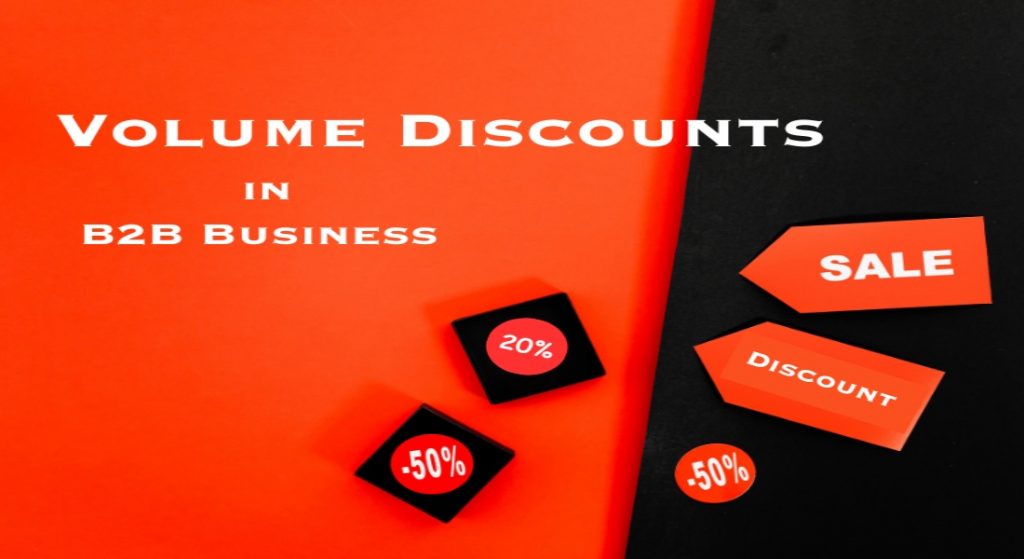
Regarding discounts, both businesses and customers think about their profits. The business person must introduce discounts in a way that will be convenient for both sides. In this case, a volume discount is a good idea to balance the profit of both sides.
There are more than five types of volume discounts available in the industry of eCommerce so a business can choose any discount type according to their business type. Read this article to learn about eCommerce discounts.
Many businesses incentivize customers to buy more products or services by offering volume discounts for bulk orders. The seller and the buyer both stand to gain from this discount’s potential to save costs and boost sales.
In this article, We will discuss why volume discounts are a win-win for B2B businesses.
What Exactly is a Volume Discount?
If you buy in bulk, you can save money since you can get a better price per unit. Companies can encourage greater product purchases from their client by providing price breaks for larger orders.
A volume discount can create a win-win situation for the vendor and the buyer. Both the seller and the buyer stand to benefit from lower stock levels and higher profits because of bulk pricing. Because for a seller, bulk pricing helps to do inventory management. On the other hand, a buyer can save money while buying a product in a large quantity.
What is the Procedure for Volume Discounting?
The idea behind volume pricing is that everyone appreciates it as a good deal. Offering a volume discount is a great way to motivate buyers, whether consumers or businesses, to make larger purchases.
If you offer bulk buyers a discount on your product or service, you can increase your chances of profit from each sale. Customers may be persuaded to make larger purchases if told that doing so will save them money.
There are especially 6 types of volume discounts available, and they are –
- Bulk discounts
- Subscription discounts
- Tiered pricing
- Loyalty programs
- Threshold discount
- Bundle discount
3 Approaches to Volume Discount Pricing
Incorporating volume discount pricing into your software business can be done in several ways. For instance, increasing the likelihood of success. Three formulas for volume discounts are shown below.
Approach 1- Threshold Discount
The basic idea behind threshold pricing or last-minute discounts encourage customers to buy a product psychologically. People tend to mentally round prices up; as a result, people may interpret a price of $9.99 as $9 rather than $10. This can have a significant impact on their choice of making a purchase.
B2B businesses use threshold pricing as a standard practice. Products like candy bars, snacks, and other convenience items fall under this category. It’s not limited to cheaper goods but may be used for more pricey items like electronics and home appliances.
Threshold pricing can be implemented in several ways, $9.99, $99.99, or $199.99, just as some examples.
Approach 2- Bulk Discounts Based on Scale
The price of a product on sale is divided into tiers, each corresponding to a different price per unit. When customers meet the first tier’s minimum requirements, they advance to the second.
Companies may restrict availability or add extra features as you move up the price tiers, depending on whether or not the prices are decreasing. It’s a common kind of pricing for online services that require recurring payments.
If a consumer bought 15 of your products, some of which fell into Tier 1, some into Tier 2, and some into Tier 3, the discount applied to the Tier 1 units would be different from the discount applied to the Tier 3 units.
Approach 3- Bundle Discount
By using package pricing, you may charge your customers a single price that includes everything from production through delivery.
There are some similarities between the tiered pricing structure and package discounts, though there are also some crucial differences.
A company provides a discount for purchasing a large number in a bundle discount. If a wholesaler is prepared to buy more units once at a time, he can receive a larger discount from the seller.
If you are a wholesaler at Shopify, you can use a bundle builder app for Shopify that offers mix-and-match bundle, pre-set value, and quantity selector dropdown.
Read this article to learn how to boost sales with bundle variants.
Why are Volume Discounts Beneficial for B2B Businesses?

- It Encourages Customers to Buy More
- It Allows Businesses to Offer Competitive Prices
- Volume Discounts Improve the Cash Flow of a B2B Business
- It Helps Sellers to Maintain the Inventory
- Volume Discount helps to grab the attention of last-minute shoppers
Reason 1- It Encourages Customers to Buy More
In the case of a B2B business, customers eagerly wait to get a discount because, usually, a bulk order costs huge amounts of money. A small discount means a lot when it comes to wholesale.
Store owners can use this as an advantage and put a suitable volume discount according to their business types. When a customer sees a particular business is offering a more profitable discount over others, then they feel highly motivated to purchase from that business.
Reason 2- It Allows Businesses to Offer Competitive Prices
The B2B eCommerce industry is becoming competitive nowadays. As a result, businesses offer different types of discounts, whichever is convenient for their business. Offering a competitive price to existing customers is a good way of grabbing attention.
A competitive price is offered after an extensive analysis of other competitors. So, it requires a good amount of research and analysis before offering. When a business plans to provide a price cut for any particular product, it must look after all of its top rivalries. Otherwise, mistakes will be made, which is unsuitable for a company’s health.
If a company is looking for a way to offer competitive prices, then a volume discount is an appropriate thing for them.
Reason 3- Volume Discounts Improve the Cash Flow of a B2B Business
Customers may be encouraged to buy in bulk if discounts are offered. This has the potential to boost the company’s sales and revenue, as well as create a more stable cash flow. It is also keep in mind that discounts have also negative impacts on business cash flow. For example, frequent discounts hurt company profit.
So, a store owner should offer volume discounts that are good to go with their business cash flow.
The Chinese firm Alibaba offers appealing bulk purchase discounts to convince its customers to spend more. Discounts could vary from 20% to 60%. Prices are also flexible concerning order size.
Reason 4- It Helps Sellers to Maintain the Inventory
In the entire article, we talked about the benefit to customers, but offering a discount has good impacts on a storeowner as well. A store owner can offer discounts to move his slow-selling products. Or he can offer a bundle discount to sell or clear the rest of the inventory.
This technique usually helps during the season of different holidays. For instance, on the eve of Christmas, a store owner makes his inventory full of wolven clothes, so what about the New Year? Of course, before the new year, he has to order fancy dresses from his vendor. In such cases, the storeowner must clear his inventory before a new holiday comes.
There are several ways of clearing the rest of the stock, and providing suitable volume discounts is one of the best solutions.
Reason 5- Volume Discount helps to grab the attention of last-minute shoppers
B2B Last-minute shoppers always look for deals because they believe a bulk discount is a fantastic way to save money. So, B2B Businesses can offer a quick discount for bulk purchases.
Nowadays, B2B buyers usually act quickly on a purchase when they realize they can save money by purchasing in bulk. This is due to their desire to avoid passing on the deal. If the sale is time-sensitive, the urgency may increase the tendency of a purchase being made.
Businesses need help determining which provider has the best value when comparing rates from multiple vendors. The savings that can be realized by purchasing in bulk from a single source, however, will be readily apparent to enterprises. As a result, the odds of their doing business with you may increase.
Bottom Line
Both B2B companies and their clients can benefit from volume discounts. Offering volume discounts is an excellent way for business-to-business sellers to boost their sales and bottom line.
